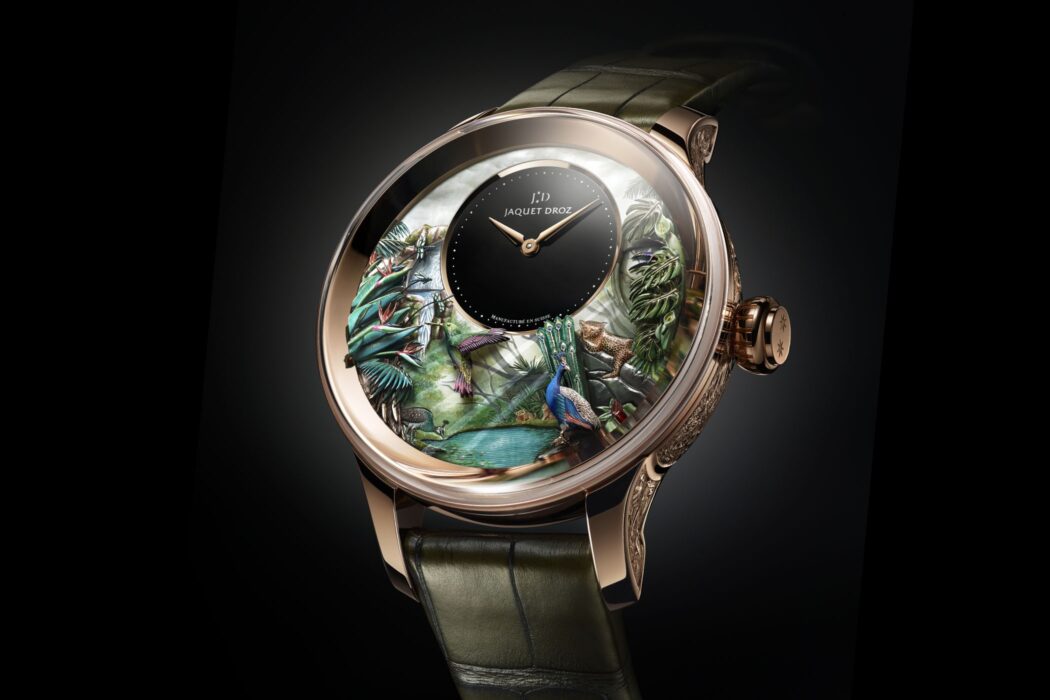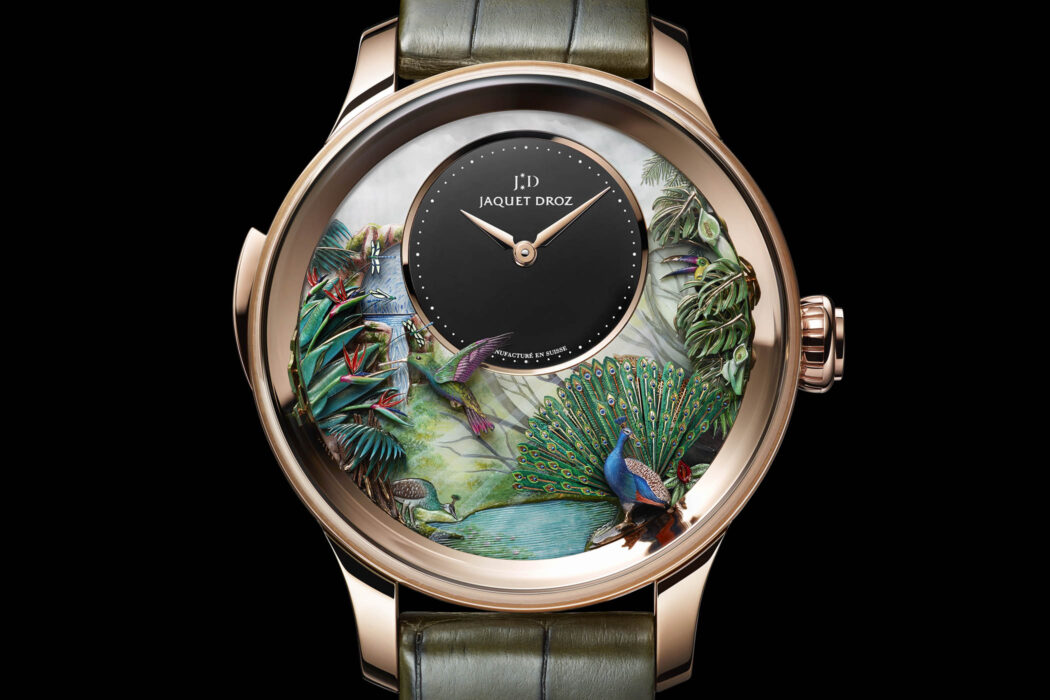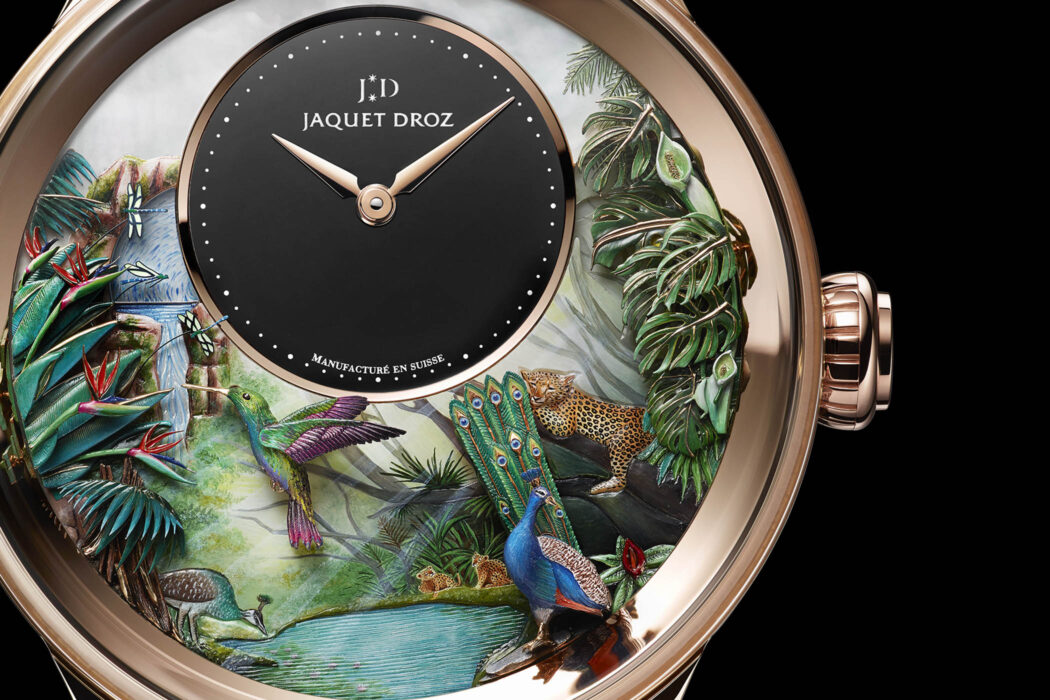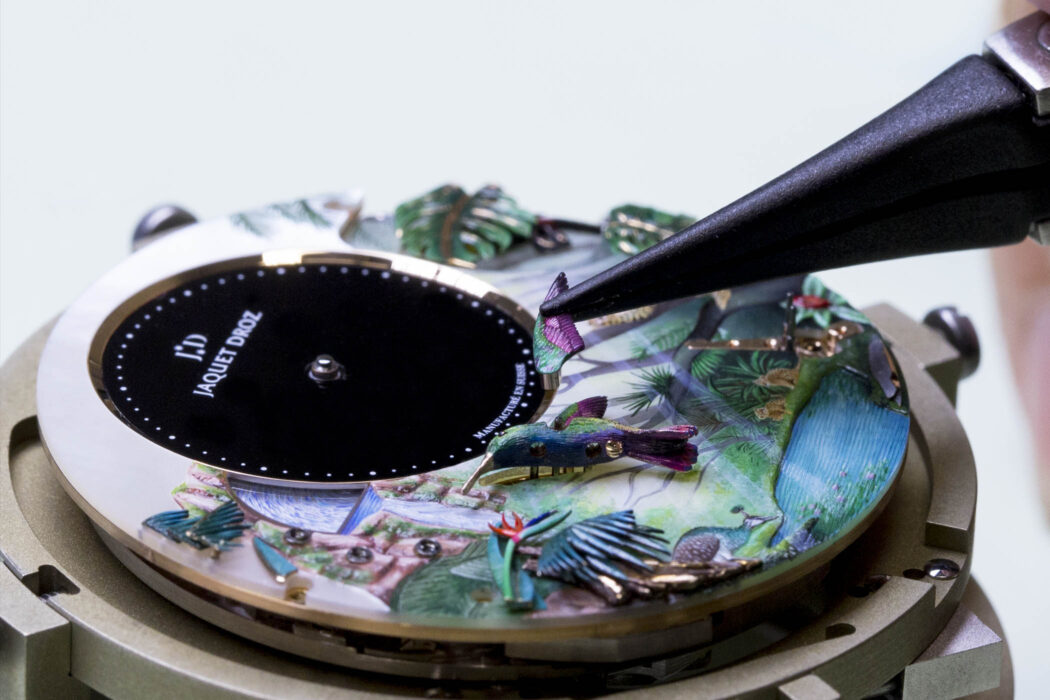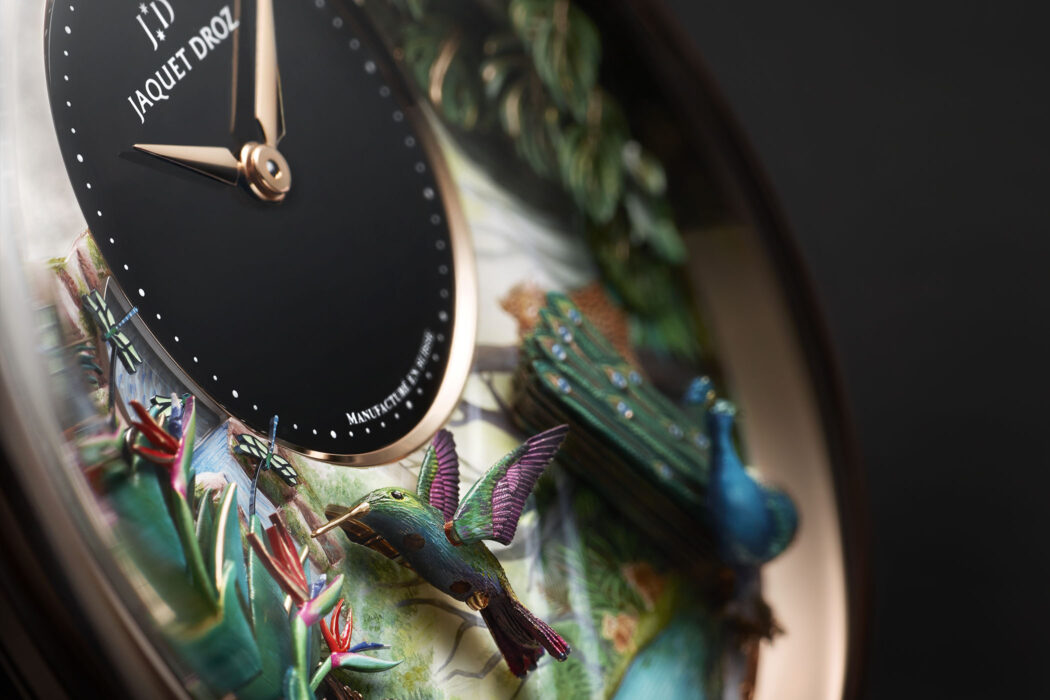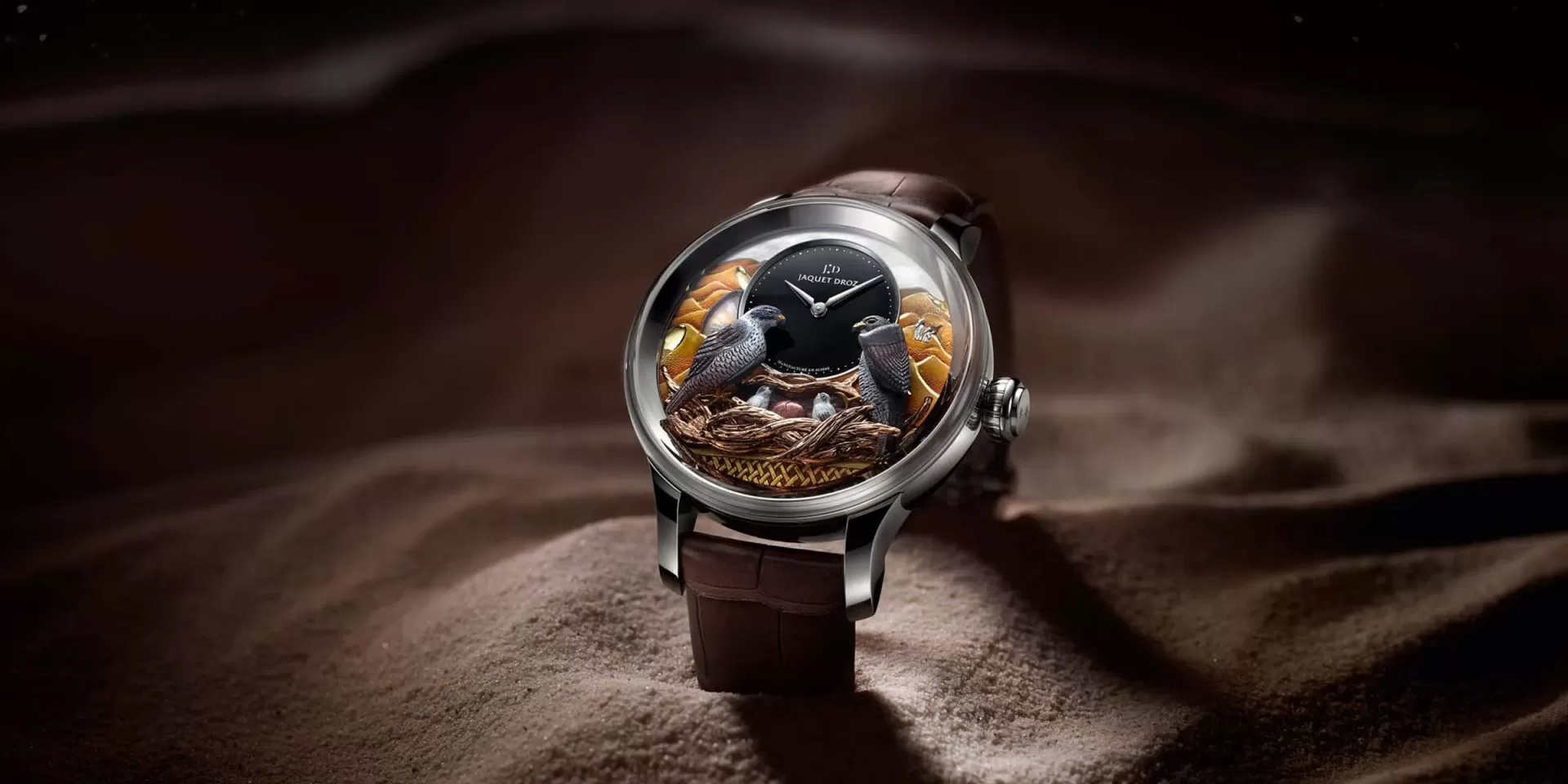In this atelier, many of the decorative techniques are unique to it, and they cannot be found in any other watchmaker’s atelier around the world.
The métiers d’art ateliers of many premium watch companies are used to manufacture exceptional artisanal pieces. However, there are few (if any) who are able to create these pieces on the same scale as Jaquet Droz. There is no doubt that the artistry found within the walls of this small manufacture in the valley of the Swiss Jura Mountains is unparalleled, whether it is the creation of dials made from mosaics of nearly invisible components, or automaton dials featuring miniature moving parts that make a scene come to life with miniature moving parts.
In the history of Jaquet Droz, this company has been making these creations for almost three centuries, starting with its founder, Pierre Jaquet-Droz. Those mechanical automatas that were designed for kings, queens, aristocrats, and aristocrats at court, which could all move, draw, write, and play music, served as the precursors to today’s androids at our fingertips. Throughout their history, they have served as a form of entertainment, and the versions the company now crafts for the wrist look like modern museum pieces still fit to be enjoyed by royalty. There are some decoration techniques that are not found in any other watchmaker’s atelier anywhere in the world, such as the eggshell dials, which are unique to this atelier.
1. A Brush with Genius
As with every Magic Lotus Automaton watch, each leaf of a lotus is hand painted in Grand Feu enamel, and depending on the dial design, the brush size can be almost as thin as a human hair, in order to fine tune the dial’s nuances.
2. Stir It Up
Using a mortar and pestle, the enamel is broken up, ground into a powder, and then water is added to create a paste that can be applied like paint to depict the dial.
3. Color Coded
The studio wall is lined with a hundred different shades of enamel powders that look like jars of spices sitting there waiting to be mixed together into a paste.
4. Behind the Scenes
It’s a beautiful scene describing how the artisan spends hours watching the magnifying lens as he assembles the pieces of a mosaic against the backdrop of the picturesque countryside in La Chaux-de-Fonds.
5. Working on Eggshells
A tiny piece of crushed quail eggshell is used to create the elephant’s face in this photo. These pieces are so tiny that they look like sand to the naked eye. There are natural variations in color in the broken-up shells and they are arranged in containers the size of a contact lens case, so as to allow shadows and details to appear in the elephant’s face, these shells are sorted by hue. During his time in Vietnam, an in-house artist discovered a new form of mosaic artwork that was brought back to Switzerland. The dial is covered with a lacquer coating for permanence after all the pieces have been placed in place – a delicate process because of the fragile nature of this material – which is applied after all the pieces have been positioned in place.
6. Tiny Dancers
Almost three hours are needed to paint this Lilliputian-size koi fish, which is 8.5 mm long and made of gold and hand-painted. Each piece is placed manually with tweezers until it comes together in its final form. As soon as the fish is placed on the dial and the automaton is activated, the fish appears to be swimming in the water as soon as it is activated.
7. Bring the Heat
Each color of enamel requires a specific temperature and timing in order to set, and when a piece of enamel is placed on a tray, it is fired in a kiln to set it.
8. In the Groove
Jaquet Droz’s Tropical Bird Repeater automaton, shown here on its caseback and movement, is made from steel and the caseback and movement are engraved by hand under a magnifying loupe, with an intricate engraving tool called a burin (a steel tool used for engraving).
